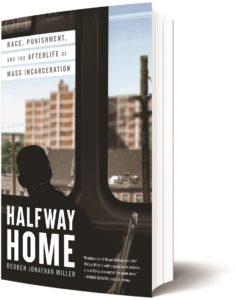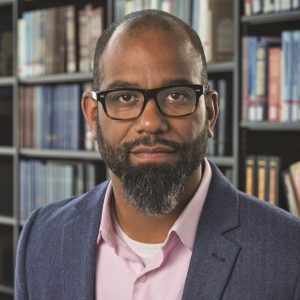Michelle Alexander changed conversations about race-based discrimination in 2010 when she published The New Jim Crow: Mass Incarceration in the Age of Colorblindness. Alexander explained that four in five Black men living in urban areas had at some point spent time in jail, many with felony convictions. States sustained “racial caste” long after Jim Crow’s supposed demise by relying on the 14th Amendment to deprive Blacks of the basic rights of citizenship.
The “war on drugs” coincided with some states’ increased reliance on felony convictions to justify denial of voting rights, exclusion from jury service, and discrimination in areas such as housing, education, child custody, and public benefits. We Americans, Alexander wrote, “use our criminal justice system to label people of color ‘criminals’ and then engage in all the practices we supposedly left behind.”

Reuben Jonathan Miller’s Halfway Home: Race, Punishment, and the Afterlife of Mass Incarceration is the single most powerful work about justice in America that I have read since The New Jim Crow. Miller describes what it has been like for those living in and out of prison over the last 15 years. Things have, unsurprisingly, gotten worse, not better, for those subject to the crushing weight of some 45,000 federal and state laws regulating the lives of those accused of committing crimes. A sociologist at the University of Chicago, Miller tells the stories and incorporates the voices of the incarcerated and their families, using granular details to underscore depths of suffering rooted in the unfairness of what he calls the American “carceral system.”
Many of Miller’s characters come and go in Halfway Home, but two appear in all of the book’s three sections. Each section is structured loosely around a central theme or thesis: debt, wage, and salvation. One of these characters is Ronald, a jailhouse lawyer who served 27 years in prison for a crime he did not commit. The other is Jeremiah, Miller’s brother, whose small offenses continue to put him behind bars throughout his life. As a “repeat offender,” Jeremiah loses his constitutional rights, and struggles to find treatment for drug addiction as well as a place to live. Miller includes the stories of many others in the book, which sometimes confused me. I had to remind myself which character and narrative Miller was describing, but once I’d gotten back on track, I found the stories deepened my investment and sense of outrage.
Sometimes, I wanted Miller to signpost more clearly at the beginning of a chapter. His riffs on James Baldwin and summaries of the history of Black enslavement initially felt unneeded. Once I summoned a bit of patience, though, I found that these poetic explorations packed a punch. In one particularly indirect chapter, “Sinnerman,” Miller takes readers back to the Village Gate, conjuring Nina Simone’s 1962 performance of the storied Black spiritual. He moves to German philosopher Friedrich Nietzsche’s concept of guilt, invokes journalist Ida B. Wells’s chronicles of lynching, and returns to Simone singing “Sinnerman.”
“The people I followed were rejected, and they were rejected at every turn,” Miller writes. “I could hear myself saying that word — rejection — with Ms. Simone playing in my head. It all made sense. The rock, the river, the sea, and the good Lord all rejected the sinner. This is the nature of sin.” This is also the way the best essays work. Writers help readers connect surprising bits and reach unexpected conclusions.
Miller follows standard practices of academic sociology, explaining how, when, and where he interviews his subjects. He also breaks some of the rules, especially when he incorporates his own anxieties about his brother. His proximity to the story, he argues, positions him to understand and communicate the indignities and injustices of mass incarceration even more skillfully. At times, I wished he had ignored his internal editor, giving himself over more fully and with less self-doubt to the conventions of memoir rather than sociology — or had at least invoked the heavenly being that is Studs Terkel.

Miller makes many important points in the book, several of which felt especially urgent to me. He asserts that Black children are born presumed guilty and know that they will be arrested at some point. They live in places that are “overpoliced and underprotected.” And given the prevalence of arrests and incarceration, millions of Black families must manage a plague of picky details to access loved ones — from for-profit prison phone systems to the intervention of so-called child welfare agencies.
Re-entry programs intent on changing behavior issue certificates for all manner of “soft skills” but ultimately fail to provide decent jobs with benefits. There’s a vicious cycle here, with a lack of housing and employment fueling community instability, and community instability fueling a lack of housing and employment. Sometimes, Miller concludes, the greatest hope for change comes from within Black families and communities — when young activists are empowered to drive change and drive out shame.
For all the stories and details, Miller winds up where Michelle Alexander left off. Changing hearts and minds matters, he writes, but “the problem of mass incarceration is ultimately a problem of citizenship.” As Alexander argued in her analysis of the 14th Amendment, until Americans change the law to restore the full rights of citizenship to Ronald and Jeremiah and all those forced to live in cages, we cannot begin to dismantle a system that takes advantage of our very worst racist instincts.



